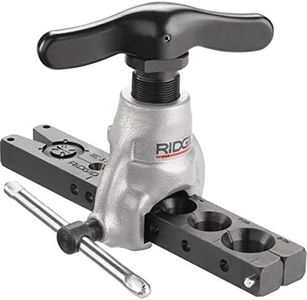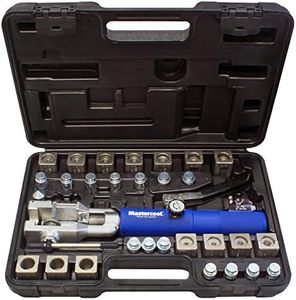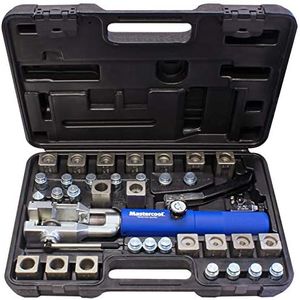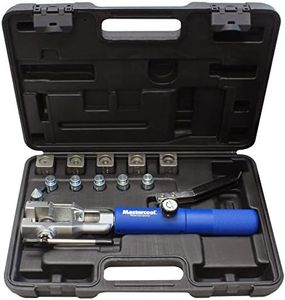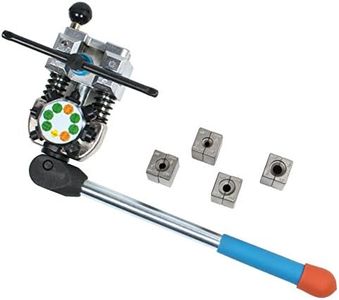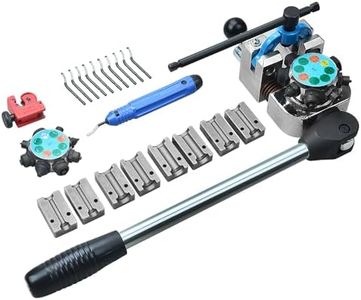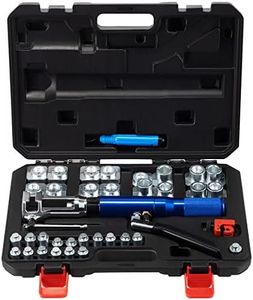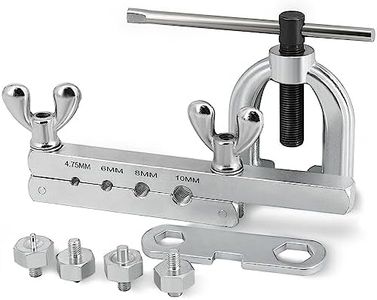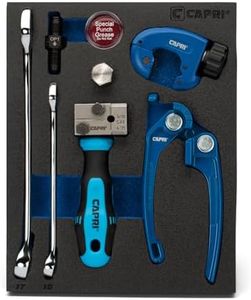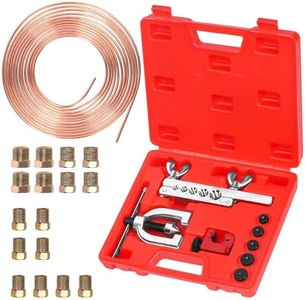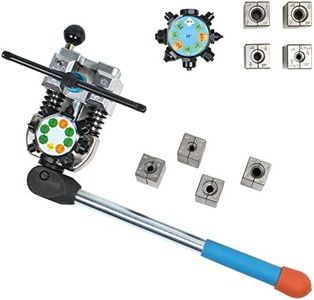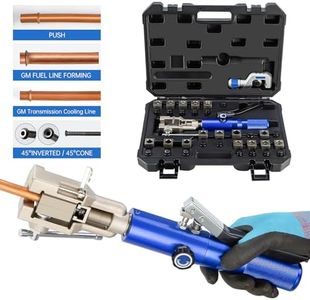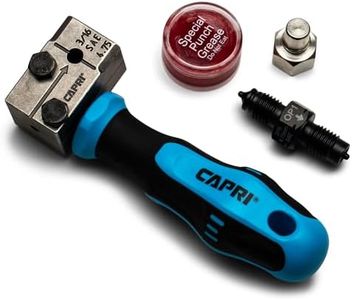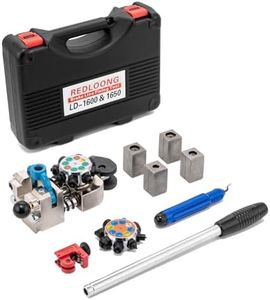We Use CookiesWe use cookies to enhance the security, performance,
functionality and for analytical and promotional activities. By continuing to browse this site you
are agreeing to our privacy policy
10 Best Brake Line Flaring Tool
From leading brands and best sellers available on the web.Buying Guide for the Best Brake Line Flaring Tool
Choosing the right brake line flaring tool is important when working on vehicle brake lines because it allows you to create reliable, leak-proof flare connections. Picking the correct tool ensures that your repairs or new installations meet safety standards and last for a long time. When shopping, pay attention to tool type, material compatibility, ease of use, and the kinds of flares the tool can create. Your vehicle needs, experience level, and frequency of use should guide your decision.Type of Flaring ToolBrake line flaring tools come in several types, including handheld, bench-mounted, and hydraulic versions. This refers to the way the tool is operated. Handheld tools are portable and good for occasional or on-car repairs, while bench-mounted and hydraulic types offer more stability and precision, making them better for regular or heavy-duty use. If you only need to make a few flares, a simple handheld tool may be sufficient; however, for repeated, professional-quality results or frequent projects, more robust types are best.
Compatible Flare TypesThere are different kinds of flares made by brake line flaring tools, most commonly single, double (inverted), and bubble flares. Each type is required for different vehicles and brake systems. Make sure you know which flare your car or project requires and choose a tool that can reliably make that type. Some tools can make multiple types of flares, which is useful if you work on different vehicles.
Size CompatibilityThis refers to the brake line diameters the tool can accommodate, usually measured in inches or millimeters. Brake lines come in different sizes, so you need a tool that matches the size of the tubing you will work on—common sizes include 3/16”, 1/4”, and 3/8”. Check what your project needs and confirm the tool includes dies and fittings for those sizes.
Material CompatibilityBrake lines are made from various materials like steel, copper-nickel, or aluminum. Not all flaring tools work well with every material, especially harder steels. Consider what type of tubing you'll use and make sure the tool is strong enough to handle it. If you plan to work with tough steel lines, pick a more durable tool; for softer metals, most tools will suffice.
Ease of UseThis covers how comfortable and simple the tool is to operate. Features like ergonomic handles, clear markings, easy clamping, and stable operation can make flaring more straightforward, which is important, especially for beginners. If you’re new to flaring, look for reviews highlighting user-friendly features, as these make achieving consistent, high-quality flares much easier.
Durability and Construction QualityA sturdily built tool ensures longevity and reliable performance over time. Tools made from quality steel and with precise machining will create better flares and last longer, especially if you plan to use them repeatedly. If you need the tool for more than a one-time use, prioritize built quality and solid construction.
